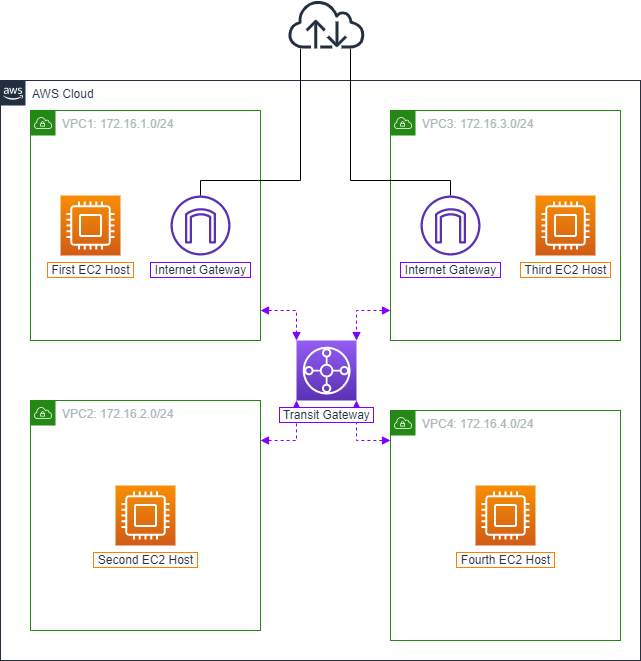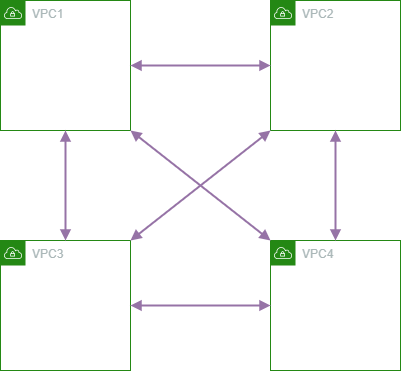Introduction
Overview
ℹ️ Information: This lab guides you through implementing a scalable network architecture using AWS Transit Gateway to connect multiple VPCs efficiently.
In this lab, you will implement the following architecture to connect four VPCs via AWS Transit Gateway:

Understanding VPC Peering Limitations
ℹ️ Information: In the previous lab “Setting up VPC Peering”, you learned about connecting two VPCs using VPC Peering. Let’s analyze why this approach becomes challenging with multiple VPCs.

💡 Pro Tip: With four VPCs, you would need six VPC Peering connections. This number grows exponentially with more VPCs, making VPC Peering less scalable for complex network architectures.
AWS Transit Gateway (TGW)
ℹ️ Information: AWS Transit Gateway is a network transit hub that enables you to connect VPCs and on-premises networks through a single gateway. It acts as a cloud router, simplifying network architecture and reducing the number of connections needed.
Key benefits:
- Centralized network management
- Simplified routing
- Reduced operational complexity
- Support for multiple network protocols
AWS Transit Gateway Attachment
ℹ️ Information: Transit Gateway Attachments are used to connect VPCs to your Transit Gateway. They operate at the Availability Zone (AZ) level, allowing all subnets within an AZ to connect to the Transit Gateway through a single attachment.
🔒 Security Note: Transit Gateway Attachments support encryption in transit and can be used with AWS PrivateLink for enhanced security.
⚠️ Warning: This lab will incur charges on your AWS account:
- EC2 instances will run on t3.nano
- Transit Gateway usage fees will apply
- Remember to clean up all resources after completing the lab to avoid ongoing charges